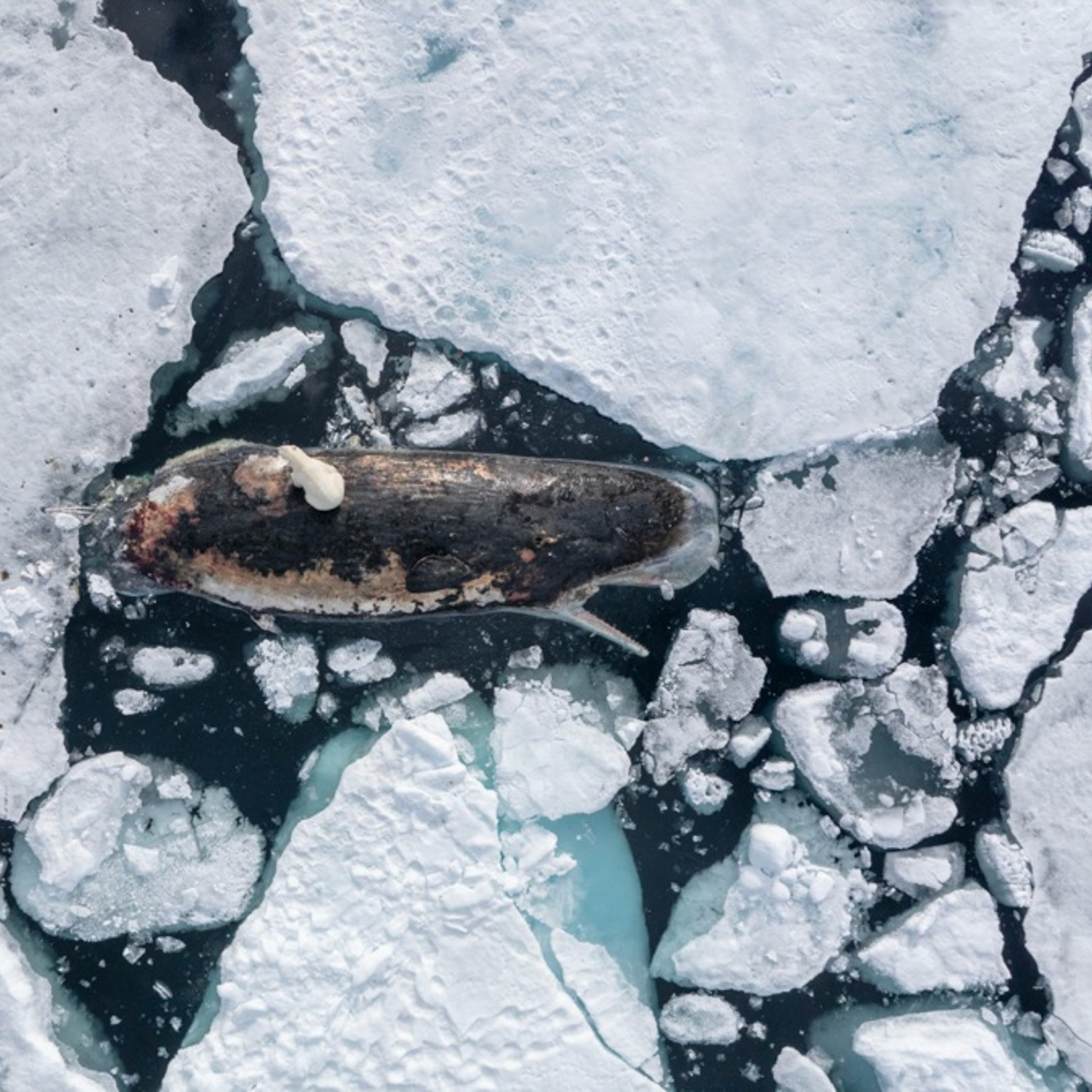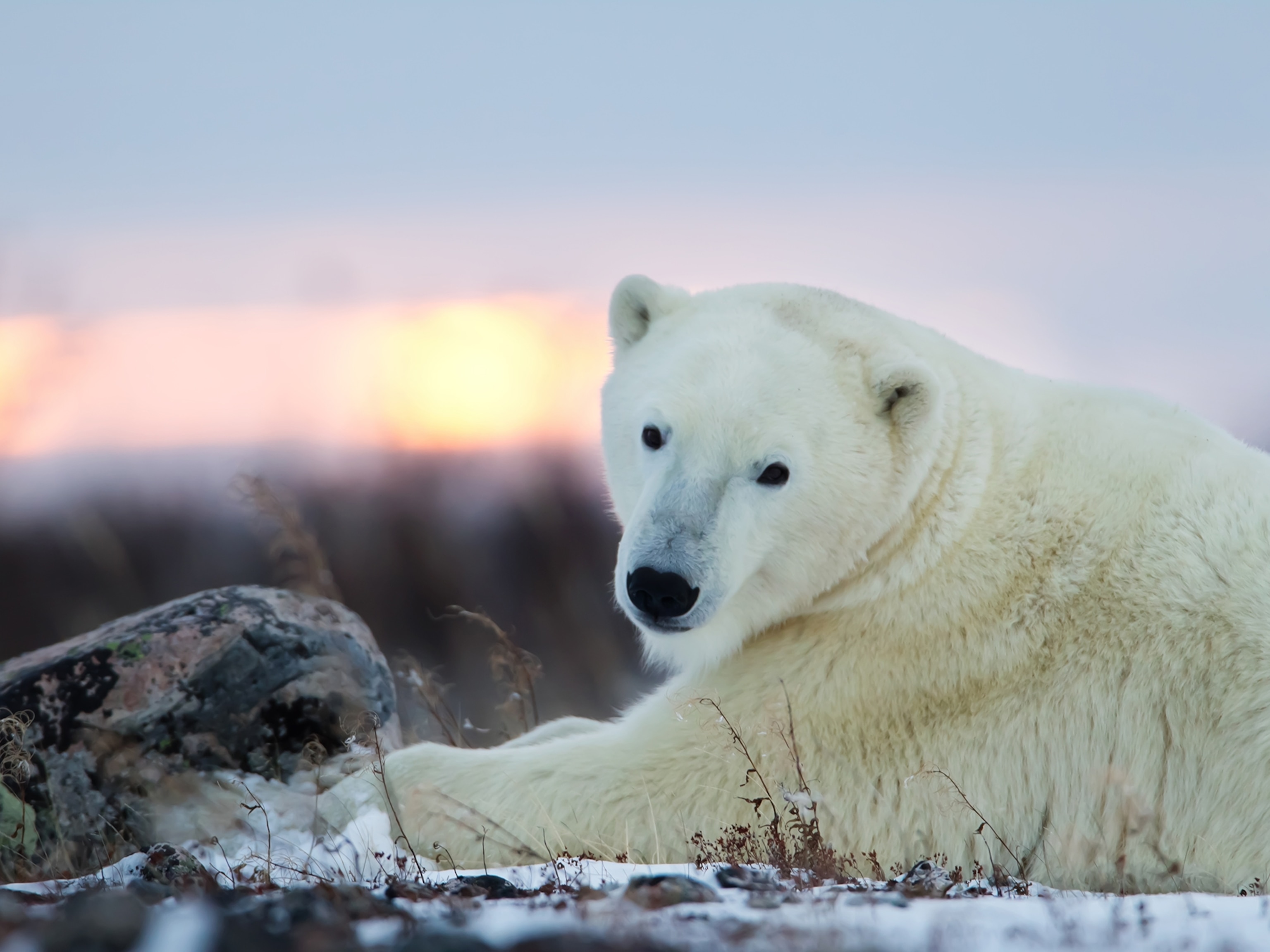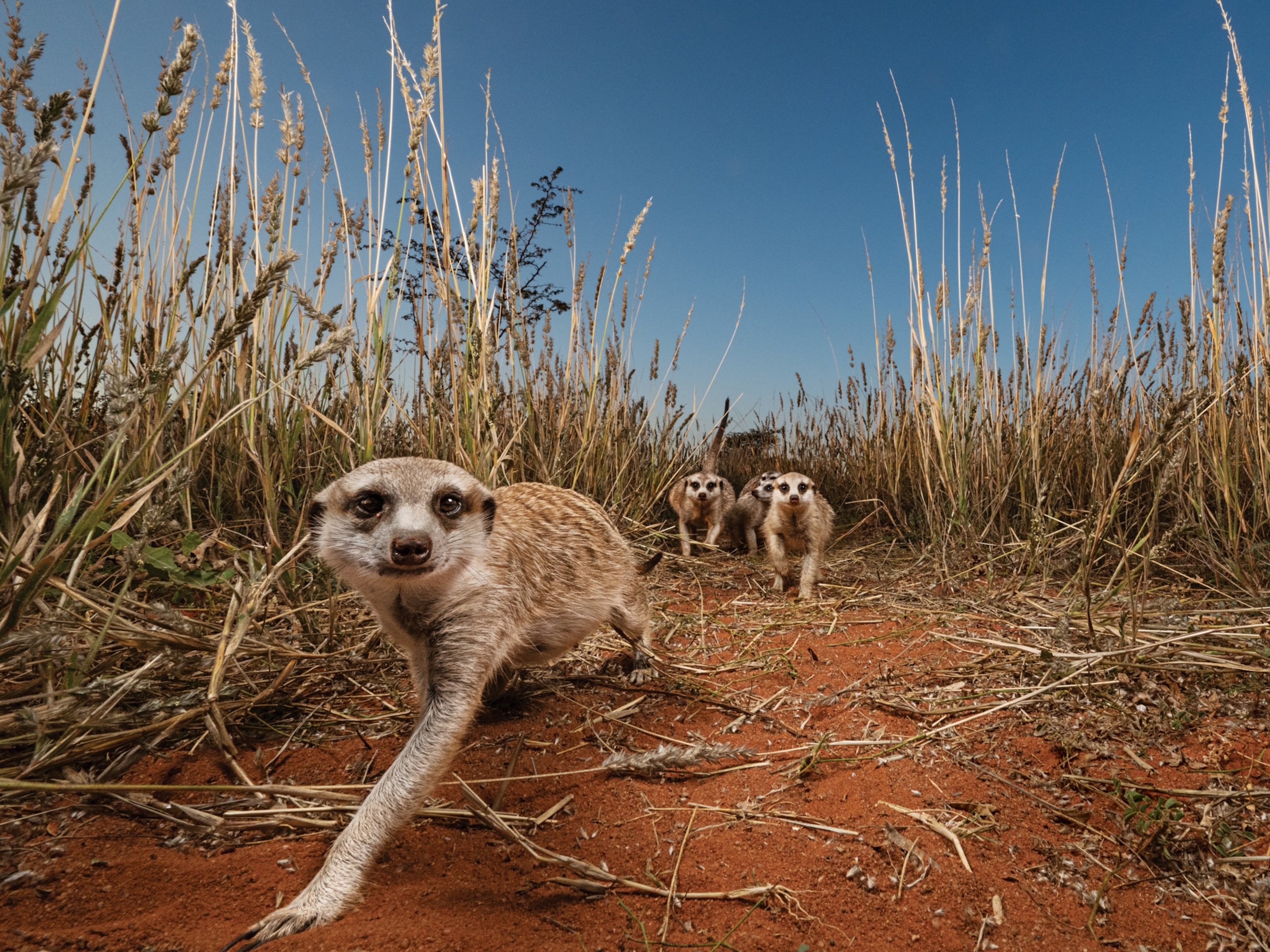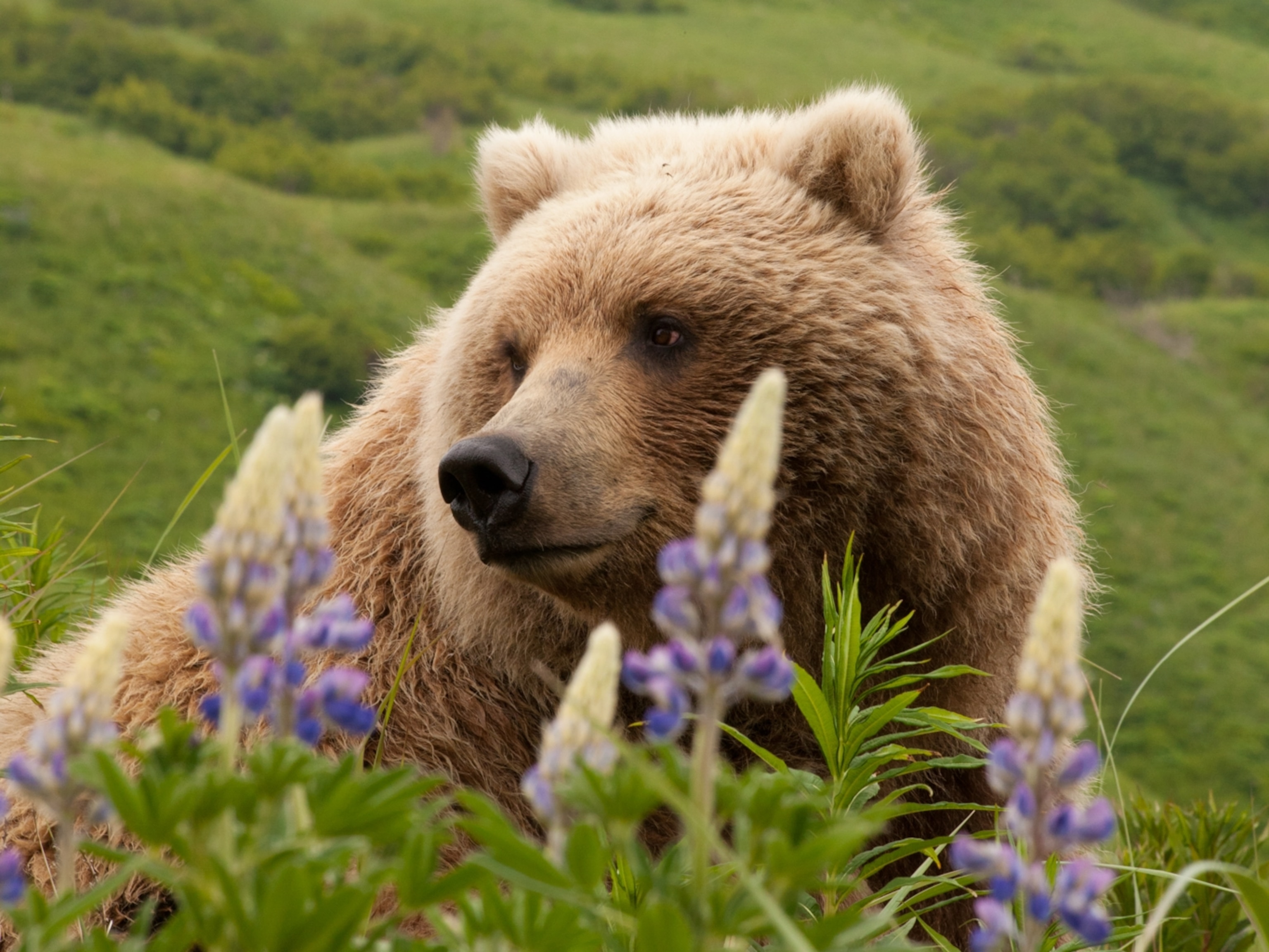
Why this newly identified polar bear subpopulation is so special
These genetically and geographically isolated bears survive longer without sea ice than scientists thought possible.
By all accounts, there shouldn’t be polar bears in southeastern Greenland—but apparently no one told the polar bears.
Although excellent swimmers, polar bears are fundamentally land animals that subsist almost entirely on marine life. To accomplish that, the massive creatures make a living as ambush predators, lying in wait next to cracks and holes in the sea ice that seals use to breathe.
But in southeastern Greenland, the sea ice season is less than four months—“too short for polar bears to survive,” says Kristin Laidre, a University of Washington scientist who researches Arctic animal ecology in collaboration with the Greenland Institute of Natural Resources. What, then, explains the presence of bears there?

Indigenous subsistence hunters in Greenland have long held that polar bears could be found year-round in fjords all the way to the country’s southernmost tip. When the government of Greenland commissioned a study on the distribution of polar bears, Laidre and her team followed “invaluable” hand-drawn maps from their Inuit collaborators and identified previously unstudied bears living at the foot of glaciers near the abandoned southeastern settlement of Skjoldungen-Timmiarmiit.
Their research, published today in the journal Science, presents DNA evidence that roughly a few hundred bears in this part of Greenland are different enough from their neighbors to be considered the 20th subpopulation—a group of animals within the same species that are genetically and geographically separated—of the 26,000 polar bears in the world. Tracking data from satellite radio collars on 27 bears also confirmed that this population survives without sea ice for three months longer than scientists had thought possible. (Learn the surprising reason polar bears need sea ice to survive.)
In light of this, it’s tempting to read the study as a new hope that polar bears can survive with less sea ice, but the authors emphasize that the conclusion isn’t that polar bears will be more resilient to climate change than previously believed. It’s that places like the southeast of Greenland—where ice from freshwater glaciers can make up for lost sea ice—could be where polar bears make their last stand.
A bear of a task
Laidre, along with Fernando Ugarte, of Greenland’s Institute of Natural Resources, and a host of international collaborators, combed 36 years’ worth of movement data and DNA samples to learn what makes the bears different. The researchers were surprised to find that the location data revealed a latitudinal boundary at about 64 degrees north. Bears that lived north of the line remained there for as long as the information was collected, and southeastern bears stayed south, with little to no intermingling of the populations.
While their cousins in northeastern Greenland roam an average of six miles a day on sheets of sea ice, the southeasterners stay close to shore in a series of fjords—long, narrow inlets carved by glaciers fed by Greenland’s ice cap. In the summer months, pieces of ice calve into the ocean, creating what scientists call a freshwater glacier mélange, a chunky slush that can pack tightly enough for polar bears to walk—and hunt—on.
Laidre found that some bears stayed in a single fjord or a couple of adjacent fjords for years at a time, occupying a home range of as little as five or six square miles. That’s a postage stamp compared to the home ranges of the northeastern population, where a typical bear traveled more than 900 miles a year across the sea ice.
Marooned polar bears and a conveyor belt of ice
Analysis of DNA obtained in the field by Laidre’s team, from previous studies and from samples provided by subsistence hunters, indicate that the southeastern animals are the “most genetically isolated polar bears on the planet,” Laidre says. In other words, they’re less related to their neighboring subpopulations than any of the 19 recognized subpopulations are to their neighbors.
But how did the two groups of polar bears diverge? The researchers say they see evidence of a “founder effect,” meaning that the southeastern population was established by a small number of individuals separated from the larger group, and their descendants interbred over generations. Genetic analysis suggests that all the southeastern bears sampled share a recent common ancestor, about two hundred years ago.
The most likely culprit for marooning the founding bears in the fjords is the Eastern Greenland Coastal Current, a huge, high-velocity southward flow along eastern Greenland’s shores. It essentially creates a frozen conveyor belt of sea ice from off the northeast coast that breaks down into smaller floes as it sweeps south.
Every year, Ugarte says, at least a handful of northeastern bears are whisked down and around Cape Farewell, Greenland’s southernmost point. The relatively fortunate are deposited in the southwest, where they might make their way north and west to Canada. The unlucky drown at sea.
“What’s interesting or special about this new population of bears is that they actually seem to know how to deal with this,” Ugarte says. Eleven of the tracked bears were caught up in the currents and traveled an average of 117 miles on the ice in under two weeks—but within a month or two, all managed to make their way back to their home fjords by swimming in the frigid waters and ambling across land.
A refuge, if only for a while
Andrew Derocher, a biology professor at the University of Alberta who has studied polar bears and the Arctic for over 40 years and wasn’t involved in the study, says the research is “elegant” and “pulled together some interesting results.”
He adds that it’s not a revelation to see glacial ice supporting a population of polar bears in the absence of sea ice. There’s the well-documented example of Svalbard, a Norwegian archipelago where polar bears were also found to park themselves in small home ranges supplemented by glacial ice.
Scientists predict that as climate change reshapes the Arctic, glaciers in fjords will remain intact longer than sea ice, potentially creating refugia—temporary holdouts amid unfavorable living conditions—for species such as polar bears that rely on ice for hunting.
But that doesn’t mean the “salvation of polar bears,” explains Steven Amstrup, chief scientist at the conservation organization Polar Bears International and former director for 30 years of Alaskan polar bear research at the United States Geological Survey.
Although in the public imagination the Arctic may be chock-a-block with glaciers, much of the polar north is tundra, treeless flatlands that overlay frozen ground called permafrost. “The Arctic’s reservoirs of freshwater glacial ice are mostly Greenland and Svalbard, with a little bit in far northern Canada,” Laidre says. These glacial mélanges are uncommon in the Arctic and wouldn’t be able to support a large number of bears.
Amstrup hopes the research “will encourage scientists and managers to do some surveys of where else in the Arctic” glaciers could help polar bears hold on longer.
“If anything, this study really is another piece of evidence of the fundamental relationship between polar bears and ice-covered water,” he says. “Do they really care if that ice is fresh water or salt water? Probably not, as long as there are seals underneath it.”
A subgroup by any other name
The study authors make the case that Greenland’s southeastern bears, by virtue of their genetic differences and geographical separation from those in the northeast, should be recognized as the 20th subpopulation of polar bears in the Arctic.
Ultimately, that’s a question for the polar bear experts, including Lairdre and Derocher, at the International Union for Conservation of Nature. They’ll consider factors including the number of bears in the population—which scientists have yet to pin down—and whether attempting to manage them as a separate population would be beneficial.
The study authors see the southeastern bears’ genetic distinctiveness as something that must be conserved and protected. Derocher and Amstrup don’t disagree, but they add a note of concern.
“My guess is what we’ve got is a small, inbreeding, isolated population,” Derocher says, “and such populations we know from other studies of large carnivores are vulnerable to inbreeding depression, disease episodes, and just random demographic events.”
“Isolated populations, from an evolutionary context, are typically more vulnerable,” Amstrup agrees.
“This sort of genetic isolation and fragmentation is the sort of thing that we’ll probably see much more of in the future as we get smaller and smaller groups of bears persisting in [more distant] areas,” Derocher says.








